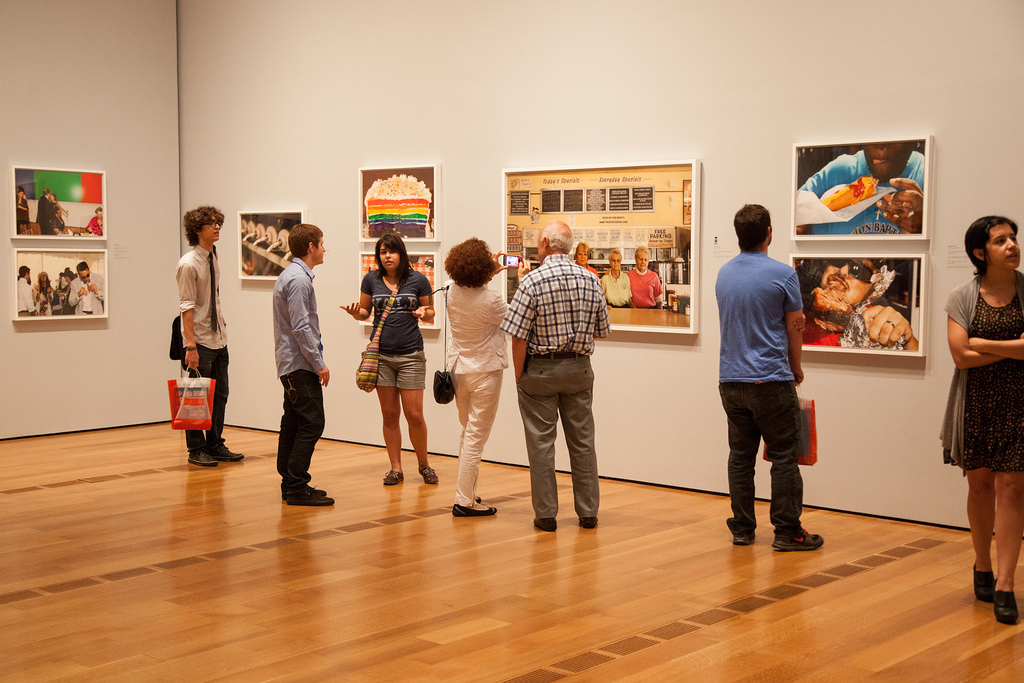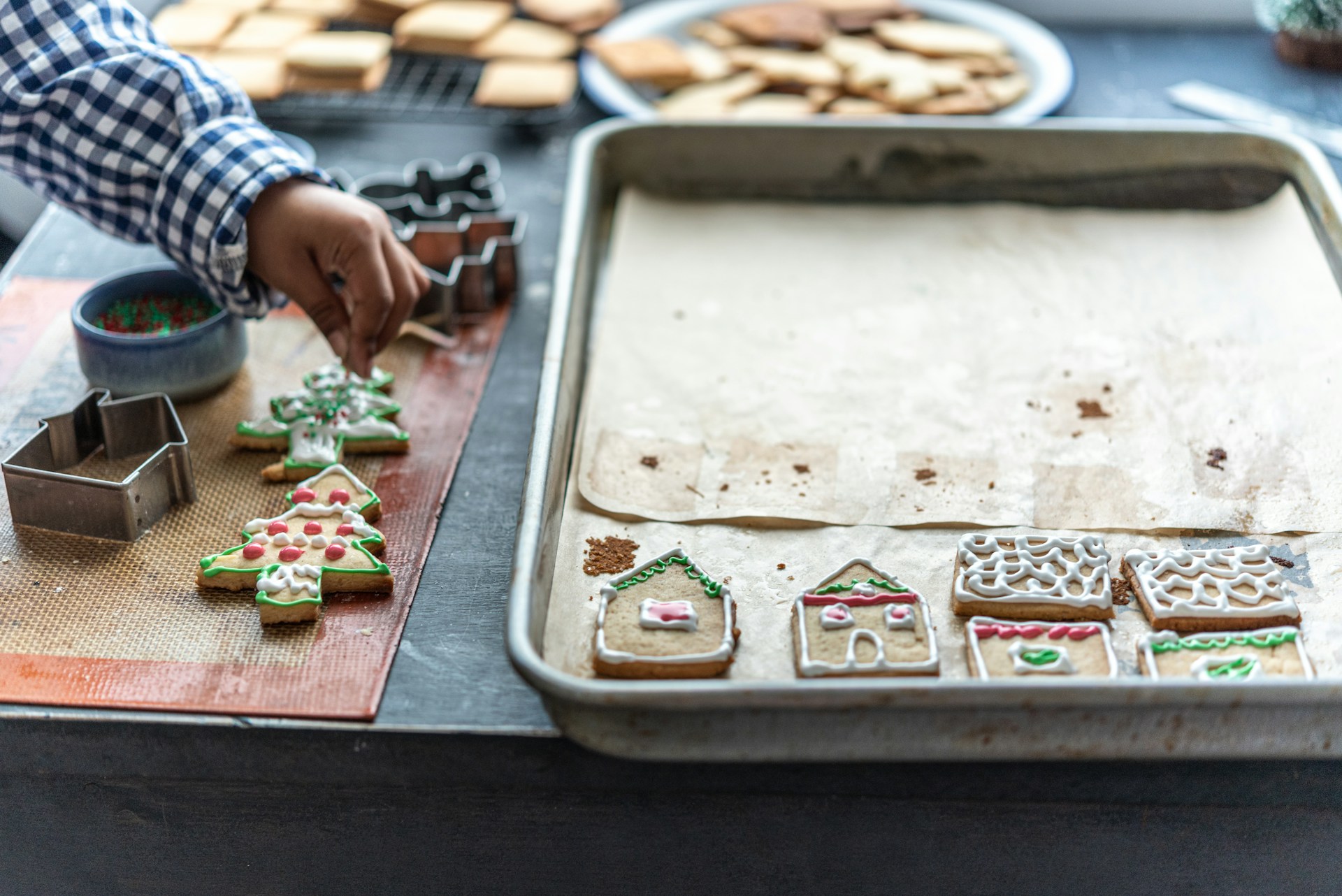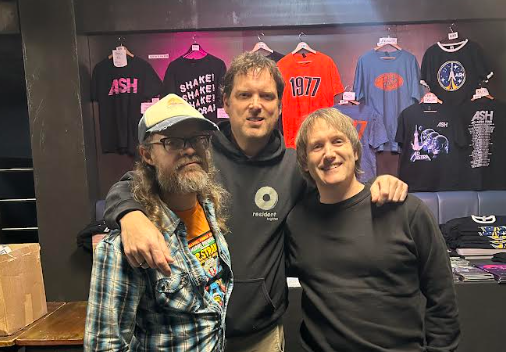by Rowan Lees
Brought together through a shared passion for taking pictures and collecting them, gurus of the photography world David Hurn and Martin Parr met at the Welsh National Museum for a conversation about art. The talk was arranged on the back of Hurn’s ÔÇÿSwaps’ collection, on display until the 15th of April.
The exhibition is a wonderful series of photos Hurn has acquired by ÔÇÿswapping’ a print or other piece of art with the photographer in question. All of these swaps are done with complete intentionality; he knows exactly which picture he wants from which person, he usually gets the one he wants too. With a seemingly infectious charm, he has made his way into the lives of many of the best photographers in Britain and the rest of the world.

Martin Parr, his conversational partner for the evening, needed no introduction to the audience of photography students and admirers. Parr has created some of the most iconic images of the 20th century, his over-saturated portraits of New Brighton Beach and use of micro for often uncomfortably ÔÇÿclose up’ images cementing his style in the practice of documentary photography and in the wider culture too, many of his pictures being instantly recognisable.
Two grand looking armchairs and a few bottles of water sat on the stage while a sell-out audience crept into the venue, many attendees taking no days off and arming themselves with huge cameras for the event, their flashes during the talk met with both annoyance and knowing smiles and glances. There was a strange feeling of community too, of (mostly) balding and middle-aged photographers, likely in local photo societies together. They pointed and waved at each other across the auditorium prior to the start and I felt a little left out, maybe my exams this Spring will thin my hair enough to join in next time.
Through the talk, we heard stories of developments in the photographers’ lives and careers, insights into the workings of the Magnum Society, and saw how the two brilliantly differing personalities interacted on stage. Hurn seemed to have acted as eccentrically in life as his indoor scarf wearing suggested. Parr, more orderly in his approaches, gave the impression of a calm auteur of his work and collections.

Before learning much of Parr’s career though, Hurn was easily persuaded into telling some of the stories of his come up, so to speak. For the purpose of collection, David would quite literally turn up at the doors of people whose photos he admired, flatter his way into an invitation in, and propose to swap a print with the photographer. More than anything this seemed like a lesson in being direct since it’s worked out so well for the guy. You can see the result of this forthrightness at the ÔÇÿSwaps’ exhibition, along with a few stories about how he came into possession of a few of the snaps. One thing I feel is understated there, however, is the way he let people into his home, Martin too knew the reputation of Hurn’s house at the height of his collecting and regarded it as a ÔÇÿhostel’ for the incoming photographers.
Martin explained how his own switch to colour photography (a dramatic move at the time if you wanted to be taken seriously) was prompted by the growing number of American photographers making the switch, but also by John Hinde’s brightly coloured postcards in his workplace of Butlins. He also explained the interesting premises and motivations to his later series’, ÔÇÿSmall World’ being my particular favourite for its comical look at the global industry of tourism. Set up to house Parr’s works and to support “photographers who made, and continue to make, important work focused on the British Isles”, you can find great work on the Foundation site or go to see it for real in Bristol, a short walk from Temple Meads.
After the talk came a Q&A section which provided a few interesting moments, the questioners in most part trying to explore the inner workings of Magnum, the prime photographic co-operative of the world, of which Hurn and Parr are both members. The passage wasn’t quite so easy for Martin, whose work was considered too radically modern to become part of the esteemed society. The passage isn’t so simple now either as they have apparently taken in only one new member per year on average!
An interesting and delightfully knowledgeable pair, Parr and Hurn provided a great background into their respective works and the motivations for these works too, practiced and considered speakers on every topic covered. They are practiced most importantly in the act of taking and collecting pictures, however, so check out the exhibition at the Welsh National Museum before it goes, Martin Parr’s Foundation, and see the incredible work of photographers from Magnum Photos.



